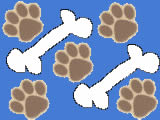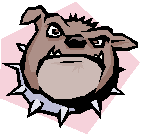Understand The Term Punishment
Punishment In Dog Training
|
The term punishment in dog training is different than when humans think of punishment. In dog training we think of corrections as a punishment. An unpleasant situation happens as a result of an undesirable deed. This unpleasant experience should cause the dog to avoid that behavior. Punishment covers a large range including withholding a reward, ignoring the dog, threatening gestures, startling loud noises, reprimanding, harsh scolding, shaking, slapping, hitting, a quick choke collar correction, a quick pinch collar correction, an electric shock from a remote shock trainer, restraining the dog's movements, isolating the dog, or confining the dog. The correction must always be tailored to the temperament of the dog and the situation. . |
A soft dog will respond to a harsh word, while a tough dog would need a physical correction. A correction is a sequence of events that must be in proper order and must follow one another very rapidly. It starts with a verbal warning that allows the dog to avoid the correction by performing the learned response or desired behavior. Then comes the unpleasant stimulus or correction. The correction must be forceful enough to make a lasting impression on the dog, but not enough to cause any physical or psychological damage to the dog. The correction must be related to the objective of the exercise, then a physical manipulation into the desired response. We then assist the dog into the behavior rather than allow the dog to guess what response we want and help them into it. Steps two and three are often tied together through the use of the leash correction. While the dog is manipulated into the position, he gets the reward that helps the dog realize where his advantage lies. The amount of force in step two is different for every dog and each situation. The way we find this level is that we start at the least amount, then gradually increase until a level that the dog responds to has been reached; the least amount of force necessary to get the job done. The job is to get the dog's attention. |
|
|
The use of his praise/correction balance is very important in dog training. Always remember that the rewards must be attractive and must always be earned, a warning must precede corrections, and the correction must be enough to get the dog's attention. Your corrections must always be followed by praise and, most importantly, your timing for both the praise or correction must be precise in order for the dog to understand the lesson. |
Continue to The Memory Process








 .
.